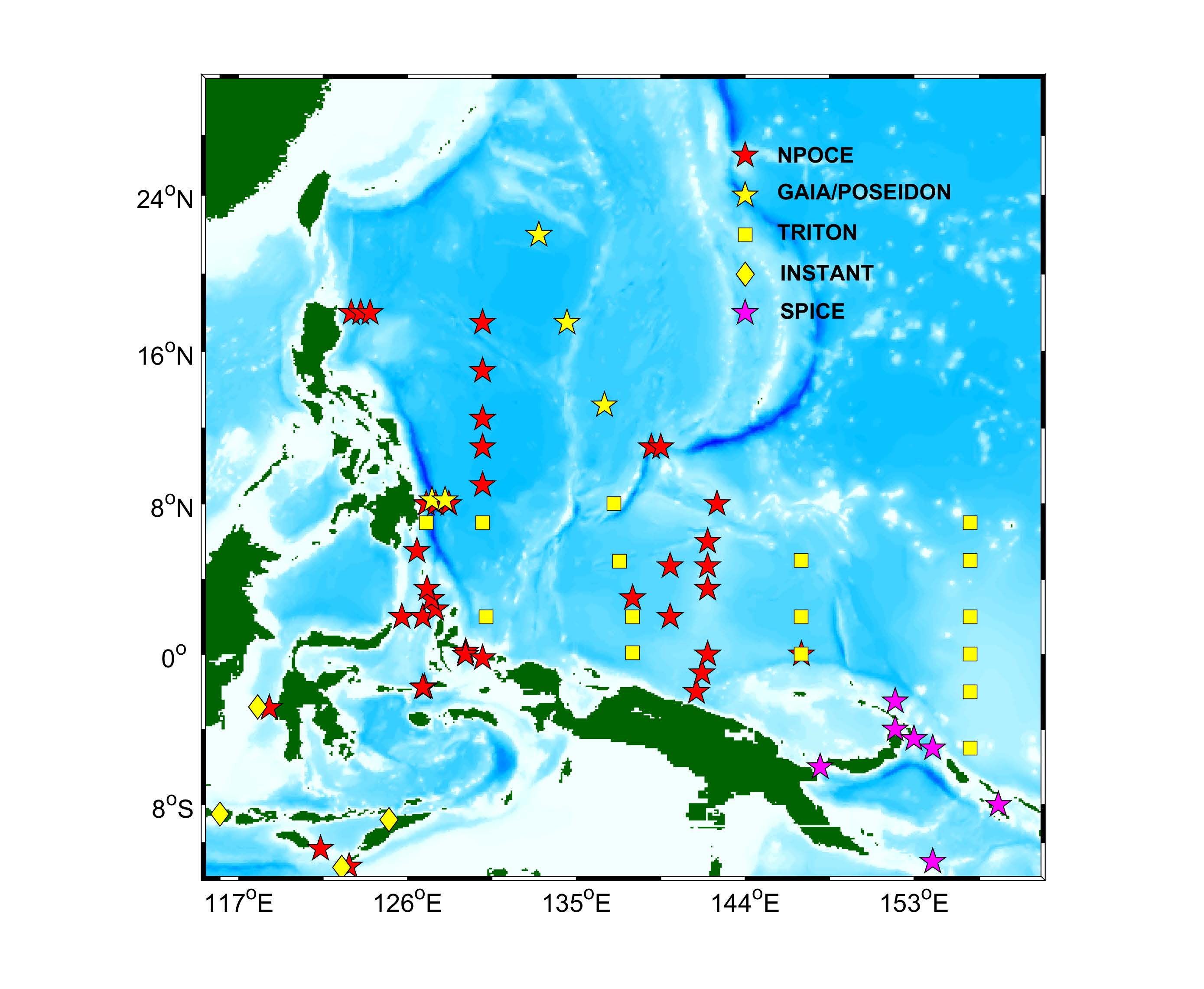“Review on observational studies of western tropical Pacific Ocean circulation and climate” published in Special Issue on the 70-year Anniversary of IOCAS
To celebrate the 70th anniversary of the Institute of Oceanology, Chinese Academy of Sciences (IOCAS), Journal of Oceanology and Limnology (Previously published as Chinese Journal of Oceanology and Limnology before 2018) published a Special Issue (Volume 38, Issue 4) to commemorate this important milestone on July 24, 2020. As one of the contributed papers, the review paper “Review on observational studies of western tropical Pacific Ocean circulation and climate”, led by NPOCE Chair, Dunxin Hu, and two vice-chairs, Fan Wang and Janet Sprintall, and other 19 scientists from 15 oceanographic and climatological communities all over the world, highlights many important achievements and future focuses on observational studies of western tropical Pacific Ocean circulation and climate in recent 20 years.
The Western Tropical Pacific (WTP) Ocean holds the largest area of warm water in the world ocean referred to as the Western Pacific Warm Pool, which modulates the regional and global climate through strong atmospheric convection and its variability. The WTP is unique in terms of its complex 3-D ocean circulation system and intensive multi-scale variability, making it crucial in the water and energy cycle of the global ocean. Great advances have been made in understanding the complexity of the WTP ocean circulation and associated climate impact by the international scientific community since the 1960s through field experiments. In this study, they review the evolving insight to the 3-D structure and multi-scale variability of the ocean circulation in the WTP and their climatic impacts based on in-situ ocean observations in the past decades, with emphasis on the achievements since 2000 (Fig.1).

Fig1. Mooring and buoy arrays during the NPOCE period. Red stars denote moorings deployed by IOCAS through NPOCE, yellow stars denote moorings deployed by KIOST through GAIA and Poseidon, yellow squares denote moorings and buoys deployed by JAMSTEC through TRITON, yellow diamonds denote moorings deployed through INSTANT, and purple stars denote moorings deployed through SPICE.

Fig2. ADCP measurements of the subsurface undercurrents east of the Philippines (adapted after Hu et al., 2013; Zhang et al., 2014; Chen et al., 2015; Wang et al., 2016b; Hu et al., 2016; Zhang et al., 2017)
The article elaborated three historical stages of the research investigation in the WTP, including the Cooperative Study of the Kuroshio and Adjacent Regions (CSK), the Tropical Ocean and Global Atmosphere (TOGA) and the World Ocean Circulation Experiment (WOCE), and the Southwest/ Northwest Pacific Ocean Circulation and Climate Experiment (SPICE/NPOCE). It generalized the significant scientific progress in our understanding of the structure and multi-scale variability of ocean circulation and their interactions with the atmosphere in the WTP based on three themes, Ocean circulation in the WTP, ITF and inter-basin climate interactions, and western Pacific Ocean variability and its climatic impacts. In the last part, the challenges and open questions remaining are reviewed as well as future plan for international collaborative study of the WTP ocean circulation and climate.
Hu, D., Wang, F., Sprintall, J. et al. Review on observational studies of western tropical Pacific Ocean circulation and climate. J. Ocean. Limnol. 38, 906–929 (2020). https://doi.org/10.1007/s00343-020-0240-1.